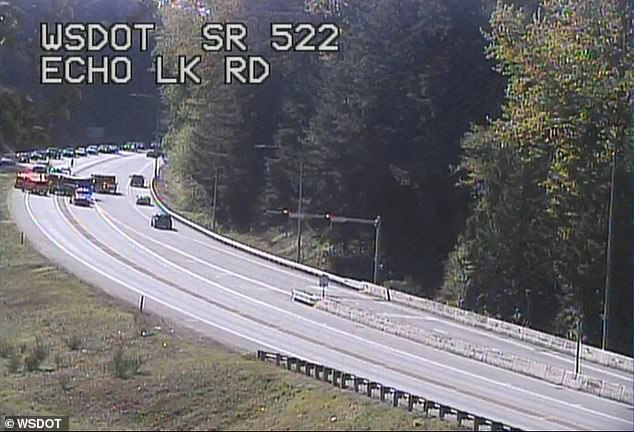The fatal mistake a Tesla driver made before killing a ‘friendly and outgoing’ 28-year-old in Washington
Authorities have confirmed that a Tesla on Autopilot was partly to blame for a crash in Washington that killed a motorcyclist.
Jeffrey Nissen, 28, was driving about 15 miles northeast of Seattle when a Model S approached him from behind, knocked him off his bike and then ran him over.
Investigators with the Washington State Patrol discovered that the Tesla driver was using the company’s Full Self Driving (FSD) feature and checking his cell phone while driving.
Nissen was found underneath the car and died at the scene, authorities said.
Motorcyclist Jeffrey Nissen, 28, (pictured) was riding about 15 miles northeast of Seattle when a Model S struck him from behind.
The 56-year-old driver was arrested for investigation of vehicular manslaughter.
He described putting the car on autopilot and briefly checking his phone to send a text while stuck in traffic.
He also admitted to consuming one alcoholic drink before getting behind the wheel, although he submitted to a blood and breath test.
Police say his story checks out, based on their investigation.
But Washington State Patrol Capt. Deion Glover said Tuesday, “The investigation into this case is ongoing.”
He said the Snohomish County district attorney will determine whether to file charges in the case.
Tesla’s manual warns drivers not to rely solely on the FSD feature. They should keep their hands on the wheel at all times, “pay attention to road conditions and surrounding traffic, watch for pedestrians and cyclists, and always be prepared to take immediate action.”
It is at least the second death in the US involving Tesla’s “Full Self-Driving” system.
One of the Colorado electric carmaker’s employees veered off the road and died in a serious crash in 2022 while believed to be in a car.
According to the U.S. National Highway Traffic Safety Administration, there has been one fatality and 75 accidents involving the system.
The reports do not confirm whether the system is responsible for the deaths.
Tesla touts its FSD system, which offers the ability to “drive your Tesla vehicle almost anywhere.”
“Your vehicle can drive itself almost anywhere with minimal driver intervention and will continually improve,” the description continues.

Investigators from the Washington State Patrol found that the Tesla driver was using the company’s ‘Full Self Driving’ (FSD) feature and was looking at his cell phone while the vehicle was moving
FSD guides vehicles from the entrance to the exit of a motorway, advises on lane changes, navigates at junctions, automatically turns on the indicator and takes the correct exit.
The technology also assists with lane changes on the highway, helps drivers parallel park and recognizes stop signs and traffic lights.
Tesla CEO Elon Musk said last week that “Full Self Driving” should be possible without human supervision by the end of this year.
But until then, drivers should remain alert when using FSD.
Musk said last week that he doesn’t think approval from government regulators will be a limiting factor in the deployment of robotaxis.
“If you have billions of miles of evidence that in the future unattended FSD will be safer than humans, what regulator could possibly stand in the way of that?” he asked.

Tesla’s manual warns drivers not to rely solely on the FSD feature and says they should keep their hands on the wheel at all times
However, Phil Koopman, a professor at Carnegie Mellon University who researches the safety of self-driving cars, does not expect Tesla to deploy robotaxis without human drivers on almost all roads in the next decade.
Musk says the safety record is based on having a human driver overseeing the automated system.
“If you don’t have data that shows the driver never needs to guide the automation, there’s no reason to say they’re sufficiently safe,” he said.
Musk has said that Tesla will unveil a special robotaxi vehicle at an event on October 10. The event was postponed from August 8 to make the desired changes to the vehicle.
Musk has told investors that Tesla is less of a car company and more of a robotics and artificial intelligence company. Many investors have put money into the company based on the long-term prospects for robotics technology.
Musk has called self-driving cars a growth engine for Tesla since its “Full Self Driving” hardware hit the market in late 2015.
